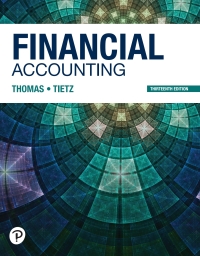Answered step by step
Verified Expert Solution
Question
1 Approved Answer
Wolverine Corp. currently has no existing business in New Zealand but is considering establishing a subsidiary there. The following information has been gathered to assess
Wolverine Corp. currently has no existing business in New Zealand but is considering establishing a subsidiary there. The following information has been gathered to assess this project:
The initial investment required is $70 million in New Zealand dollars (NZ$). Given the existing spot rate of $.50 per New Zealand dollar, the initial investment in U.S. dollars is $35 million. In addition to the NZ$10 million initial investment for plant and equipment, NZ$15 million is needed for working capital and will be borrowed by the subsidiary from a New Zealand bank. The New Zealand subsidiary will pay interest only on the loan each year, at an interest rate of 10 percent. The loan principal is to be paid in 10 years.
The project will be terminated at the end of Year 3, when the subsidiary will be sold.
The price, demand, and variable cost of the product in New Zealand are as follows:
Year Price Demand Variable Cost
1 NZ$650 30,000 units NZ$25
2 NZ$550 70,000 units NZ$40
3 NZ$490 60,000 units NZ$40
The fixed costs, such as overhead expenses, are estimated to be NZ$5 million per year.
The exchange rate of the New Zealand dollar is expected to be $.52 at the end of Year 1, $.54 at the end of Year 2, and $.56 at the end of Year 3.
The New Zealand government will impose an income tax of 30 percent on income. In addition, it will impose a withholding tax of 10 percent on earnings remitted by the subsidiary. The U.S. government will allow a tax credit on the remitted earnings and will not impose any additional taxes.
All cash flows received by the subsidiary are to be sent to the parent at the end of each year. The subsidiary will use its working capital to support ongoing operations.
The plant and equipment are depreciated over 10 years using the straightline depreciation method. Since the plant and equipment are initially valued at NZ$70 million, the annual depreciation expense is NZ$7 million.
In three years, the subsidiary is to be sold. Wolverine plans to let the acquiring firm assume the existing New Zealand loan. The working capital will not be liquidated but will be used by the acquiring firm when it sells the subsidiary. Wolverine expects to receive NZ$65 million after subtracting capital gains taxes. Assume that this amount is not subject to a withholding tax. Wolverine requires a 15 percent rate of return on this project.
Determine the net present value of this project. Should Wolverine accept this project?
To help in the analysis, answer all the following questions:
A.
What is the total investment amount at the start of the project (i.e. year zero cash flow)?
Calculate the depreciation and book values for each year
What is the after-tax salvage value
Compute the Net Income during the projects life for each year.
Note: This MUST be done on table in order to earn credit. The table should have 4 columns. List the accounts name on the first column. No credit will be awarded for merely listing numbers without the associated accounts.
Calculate the Operating Cash Flows (OCF) for each year.
Create the projected Free Cash Flow Schedule for the project on a table
Projected Free Cash Flow Schedule
Year 0 Year 1 Year 2 Year 3 Year 4
+ OCF + OCF + OCF + OCF
- Equipment cost + After-tax Salvage Value
- NWC + Total NWC
----------------------------------------------------------------------------------------------------------------------------------------------
Total Free Cash Flows
-----------------------------------------------------------------------------------------------------------------------------------------------
B. Use the capital budgeting techniques below to evaluate free cash flows:
Compute the total PV of the cash inflows .
Compute the NPV using cash flow keys. List the entries and keys.
Interpret the NPV
Based on the NPV should the project be accepted or rejected? Why? Fully Explain.
Calculate the IRR using cash flow keys. List the entries and keys
Interpret the IRR
Based on the IRR should the project be accepted or rejected? Why? Fully Explain.
Step by Step Solution
There are 3 Steps involved in it
Step: 1

Get Instant Access to Expert-Tailored Solutions
See step-by-step solutions with expert insights and AI powered tools for academic success
Step: 2

Step: 3

Ace Your Homework with AI
Get the answers you need in no time with our AI-driven, step-by-step assistance
Get Started


